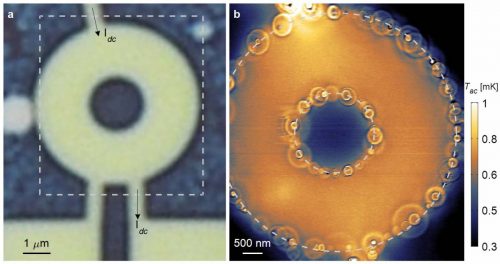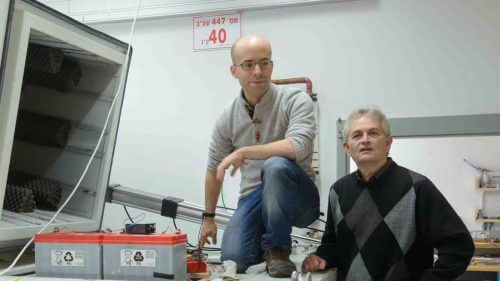Weizmann Institute of Science scientists have developed a quantum scanner thermometer, the most sensitive in the world

The 30-year-old boy is lying on the couch at his parents' house with a high fever? A normal thermometer will surely be enough to measure his temperature. This has not been the case so far, as far as the measurement of nanometer-sized materials is concerned, with the precision of higher particles, especially at low temperatures, close to absolute zero. but now, Prof. Eli Zaldov and research student Dori Halbertal from the Department of Condensed Matter Physics at the Weizmann Institute of Science, reported in an article they published In the journal "Nature" that they succeeded in developing a system that allows temperature measurement with great precision, in tiny material samples, which are only tens of nanometers in size. Such a system provides two-dimensional imaging of the heat distribution in material samples, and is able to detect changes of less than a millionth of a degree. Such a capability offers, for the first time, a new and powerful tool in the study of quantum processes that manifest themselves in heat dissipation in tiny material samples; Something that can help in the development of advanced devices of nanotechnology, in promoting the application of quantum computers and in researching basic questions in physics.
The new system, which operates without direct contact with the sample of the material being measured, is 10,000 times more sensitive than scanning thermal measurement systems that have existed so far. The sensor is built on a tiny tube made of quartz, whose opening diameter does not exceed a few tens of nanometers. On the wall of this tube, the scientists vaporized a structure made of superconducting metals, at a low temperature, in which quantum electronic interference took place, on the basis of which the device operates. "When scanning using this device," says Prof. Zaldov, "very close to the surface, only about 10 nanometers from the surface of a material sample, you get a very accurate local reading of the temperature as changes in the current flowing in the device's superconductor. The measured temperature indicates the processes of energy loss in the nanometer sample." The high sensitivity of the new measuring device, plus the low noise level, enable the measurement of minute temperature changes of less than a millionth of a degree. "The device's ability to operate at very low temperatures, with a high level of precision, and minimal intervention in the experiment," says Dori Halbertal, "allow it to measure, map and offer images of various systems that are considered to have the potential to function as quantum bits - the basic units that may underlie the application of future quantum computers ".

In fact, the new device can measure with unprecedented precision, at the same time, temperature and magnetic field on the surface of a material sample. In an article published in "Nature", the scientists of the institute and their research partners from MIT, the University of Manchester and the Institute of Nanotechnology in Barcelona describe how they used the new system on composite nanometer wires, on carbon nanotubes that were developed in the laboratory of Prof. Ernesto Yuslewitz at the Weizmann Institute of Science, as well as on the example of graphene which was produced at the University of Manchester by Dr. Moshe Ben Shalom (graphene is a carbon lattice, the thickness of a single atom, whose discovery was awarded to Andre Geim - another partner in the article on the thermometer The new one - Nobel Prize in Physics for 2010).
The device operates at very low temperatures, with a high level of accuracy, and minimal intervention in the experiment
"We have shown", say the scientists, "how even in very clean and orderly material samples processes of heat dissipation occur through tiny, atomic-sized defects, which were located and mapped using the new system". For example, the energy currently invested to read information in existing computer systems is 100 million times greater than is necessary - which causes warming and limits the miniaturization and efficiency of the systems. The new mapping and measurement device may map the weak points, thereby helping to develop tiny, efficient and more economical electronic devices than those available to us today.
Looking to the future, the new system may allow the measurement of heat dissipation - and the leakage of quantum information - from qubits, quantum "switches" that, if developed, could underpin the application of future quantum computers. Such an ability may also teach about the transition that is not understood by us today, between tiny blocks of matter that "obey" the quantum theory, that after a certain size move to act according to the laws of nature in the world of large objects.
